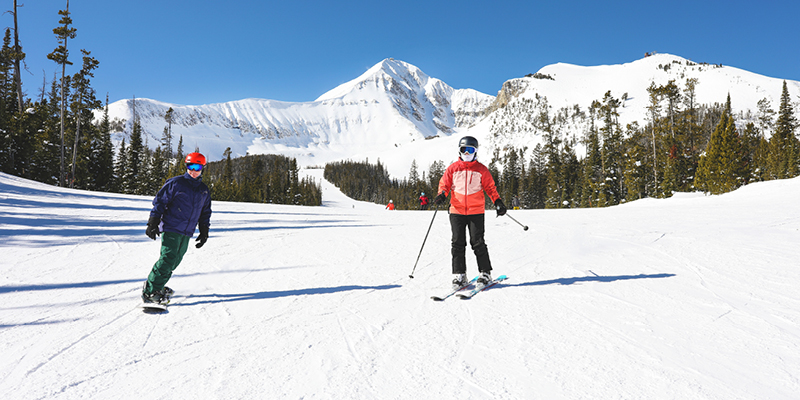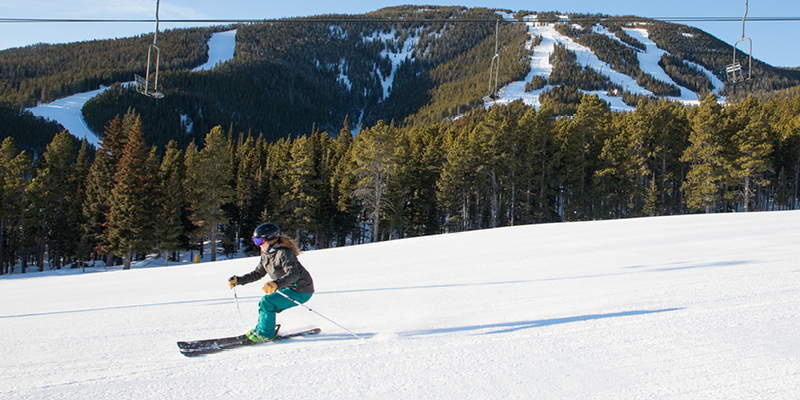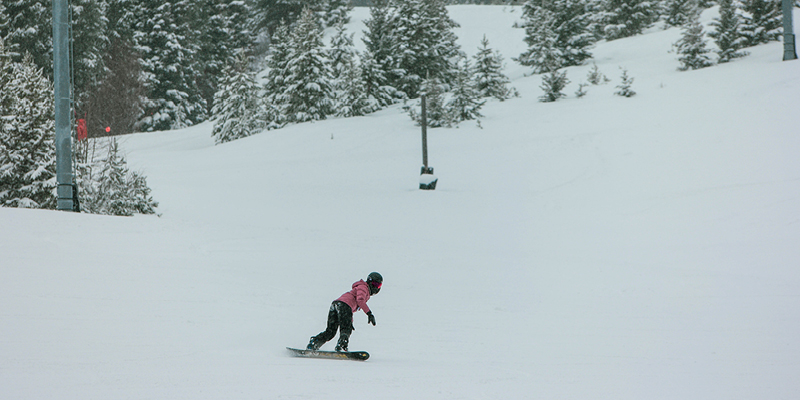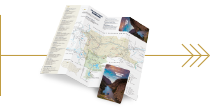Learning to Ski at Any Age
 Big Sky Resort, Photo by Alex Hanich
Big Sky Resort, Photo by Alex Hanich
Learning to ski or snowboard as an adult may seem intimidating, but it doesn't have to be. In fact, many people who start later in life have found the sport to become one of their favorite winter pastimes. We have some tips for learning as an adult, and let's say that having a partner or spouse teach you, is not one of them.
First things first, check your expectations and your mindset. It's not likely you'll be gliding smoothly down the mountain the first couple of times, but keep the faith; it will happen. Remember to take it slow and have fun — it's not a race (unless you are skiing with our kids, who seem to love to make every run into a race.)
You'll also want to do some pre-ski season workouts. Cardio and strength training are helpful since you'll use muscles you don't always engage. Squats and lunges are suitable for your quads and glutes, or some nice elevation-gaining hikes will do the trick.
Lessons are your friend. Whether it's a private or group lesson, learning from a professional who can break down your turns and show you the proper technique is helpful. Again, friends and partners are fun to ski with but not to learn from. They may be good skiers but could also have bad habits that they inadvertently pass on to you. And it's hard to be the one trying to keep up when everyone is trying to get as many turns in as they can. Also, lessons can be a great way to meet new friends at the same level as you and could turn into long-term ski buddies.
 Red Lodge Mountain, Photo by Brian Powers
Red Lodge Mountain, Photo by Brian Powers
Dress appropriately. Getting cold can put a damper on your day, and clothing has come a long way in warmth, comfort and efficiency. Start with a moisture-wicking layer, not cotton, and add pieces based on the temperature. An insulating layer, such as a down coat or sweater, topped with a waterproof shell, works efficiently. I have an insulated jacket because I get very cold, but layering gives you more flexibility as the temperature changes. I prefer mittens over gloves, but that is a personal preference, and I always have a neck warmer or balaclava and a helmet. Be sure to bring your sunscreen and lip protection — the sun is intense at high elevations, and the reflection off the snow can burn your skin quicker than you realize.
As for equipment, it's best to rent when you first start. You'll likely want to progress from beginner equipment, depending on your aggressiveness. Trying demo gear to see what type of ski suits you best is also helpful. When you're ready, used skis can be an excellent investment, but I prefer to buy new boots, so they aren't already molded to someone else's foot.
 Bridger Bowl Ski Area, Photo by Jeff Bogle
Bridger Bowl Ski Area, Photo by Jeff Bogle
Stock up on calories, stay hydrated, and don't overdo it. Having enough calories keeps your energy up and helps keep you warm. Seasoned skiers often carry a pocketful of snacks and a water bottle. And when you start to feel your legs, it might be time to quit. Injury is much more likely when you are tired, so don't push it. The safer you stay, the more time you'll have on the slopes!
Each of our ski areas, Bridger Bowl Ski Area, Red Lodge Mountain, and Big Sky Resort all have PSIA certified instructors available (alpine and snowboard) for group and individual adult lessons.
Most importantly, have fun. Skiing and snowboarding are exhilarating, so don't take it too seriously. That's the secret to kids' success starting — uninhibited fun.
See you on the slopes!


